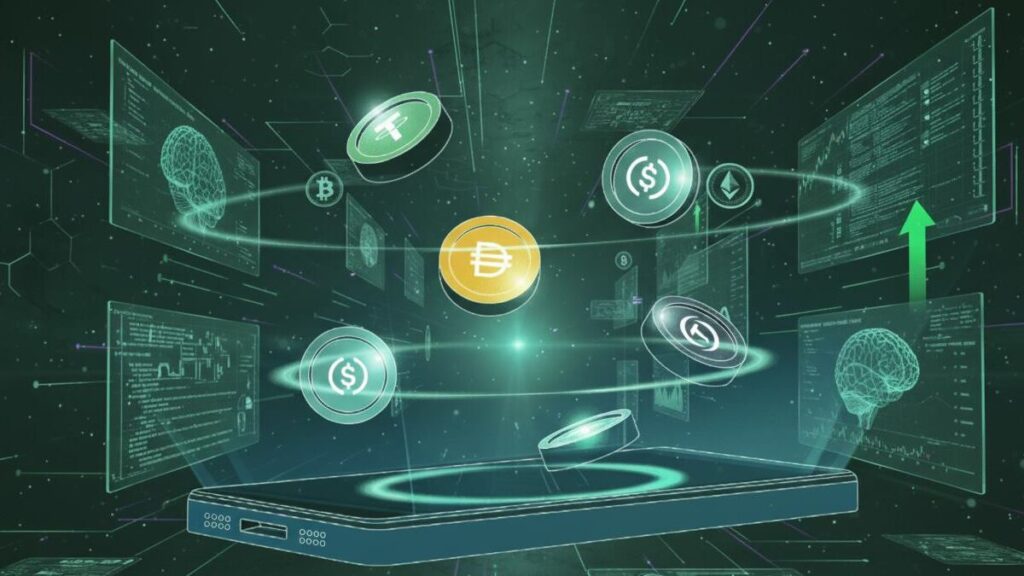AI Reveals Crypto’s Next Big Shift: From Digital Gold to Tokenized Infrastructure
AI Reveals Crypto’s Next Big Shift: From Digital Gold to Tokenized Infrastructure
By
Junia Wells
Last updated:
October 26, 2025
First Published:
October 26, 2025

Photo: Crypto Economy
The changing story of crypto
Artificial intelligence systems analyzing global crypto conversations have uncovered a fascinating transition within the industry. The narrative once dominated by Bitcoin’s image as “digital gold” is evolving into something far more complex. According to the data, investors and innovators are now focusing on real-world assets, tokenized infrastructure, and the next generation of decentralized finance.
From speculation to substance
For more than a decade, cryptocurrency was primarily viewed as a speculative market—a digital gold rush. But the latest AI trend analyses suggest the conversation is shifting from short-term profits to long-term functionality. The new focus lies in tokenizing physical and financial assets such as real estate, energy projects, and supply chains to create sustainable digital economies.
AI as a mirror of investor sentiment
AI tools trained on massive datasets of social posts, news articles, and trading activity reveal that investors are increasingly drawn to projects with measurable real-world impact. This shift demonstrates growing maturity in the market, where trust and utility are becoming as important as hype and volatility.
The rise of DeFi 2.0
Another narrative uncovered by AI is the rebirth of decentralized finance, known as DeFi 2.0. Unlike its earlier iteration, which often prioritized yield generation without sustainability, the new movement emphasizes efficiency, governance, and interoperability. Projects are now focused on building long-lasting frameworks rather than chasing fleeting returns.
Tokenization of real-world assets
One of the strongest signals from AI analysis points toward tokenization. By converting assets like property, art, or commodities into blockchain-based tokens, investors gain liquidity and accessibility previously unavailable in traditional markets. This transformation is reshaping the boundaries of ownership and investment across the global economy.
Infrastructure becomes the new frontier
AI data suggests that the crypto market’s next phase will be heavily driven by infrastructure projects. Blockchains focusing on interoperability, scalability, and data security are now at the center of attention. These foundational layers are essential for transforming crypto from a speculative asset class into a fully functioning digital economy.
The fusion of AI and blockchain insight
The use of AI in analyzing blockchain trends marks a turning point for both technologies. AI acts as an interpreter, detecting subtle shifts in sentiment and innovation that human analysts might overlook. This synergy not only helps investors make informed decisions but also allows developers to anticipate emerging demands.
A healthier market narrative
The newfound focus on tangible value and responsible innovation signals that the crypto industry is maturing. Instead of chasing overnight gains, communities are embracing transparency, sustainability, and integration with the broader financial world. This evolution could lead to greater stability and wider acceptance among mainstream institutions.
Challenges to narrative transformation
However, the shift toward tokenized infrastructure is not without obstacles. Regulatory frameworks, data privacy concerns, and global standardization will determine how quickly the new vision can materialize. AI itself also raises questions about data bias and ethical oversight, as automated interpretations could influence investment flows.
A glimpse of crypto’s future through AI’s lens
AI’s analysis of emerging narratives offers a compelling glimpse into the next chapter of cryptocurrency. The market’s transition from digital gold to tokenized infrastructure reflects a deeper transformation—one driven by innovation, accountability, and real-world utility. As blockchain matures under AI’s watchful eye, the industry may finally achieve what it has long promised: a decentralized ecosystem rooted in both technology and trust.
Popular articles
Subscribe to unlock premium content
Disney’s Timeless Magic and How the Entertainment Giant Continues to Shape Culture and Innovation

Imran Khan’s Economic Missteps Amid Political Chaos in Pakistan

The Philippines’ Digital Shift How Remittances and BPO Are Fueling Growth

Disney’s Timeless Magic and How the Entertainment Giant Continues to Shape Culture and Innovation

Imran Khan’s Economic Missteps Amid Political Chaos in Pakistan

Disney’s Timeless Magic and How the Entertainment Giant Continues to Shape Culture and Innovation









